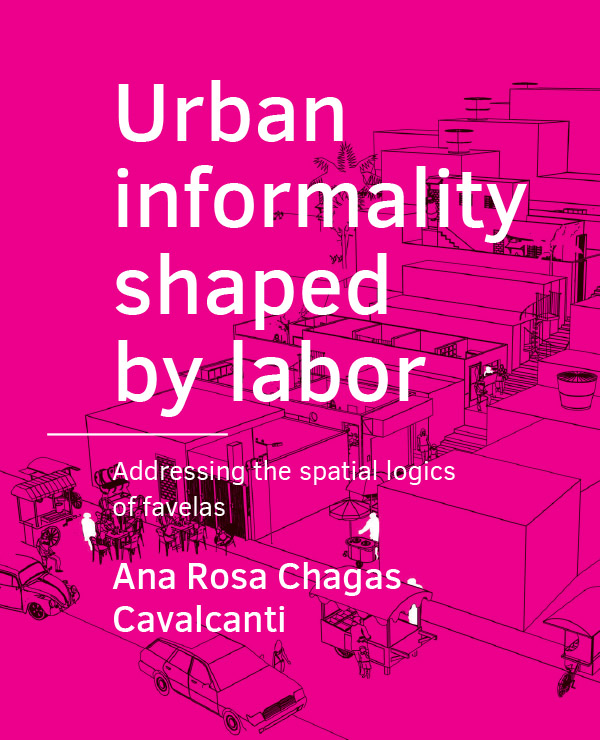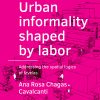Urban informality shaped by labor
€ 29,95
Addressing the spatial logics of favelas
Serie: A+BE Architecture and the Built Environment
Chagas Cavalcanti, Ana Rosa | Paperback / softback | 19-08-2019 | 9789463661997
This doctoral thesis mainly consists of a series of journal publications written by the author between 2015 and 2019. The doc…
Addressing the spatial logics of favelas
Serie: A+BE Architecture and the Built Environment
Chagas Cavalcanti, Ana Rosa | Paperback / softback | 19-08-2019 | 9789463661997
This doctoral thesis mainly consists of a series of journal publications written by the author between 2015 and 2019. The doctoral thesis presents the results of ten years of research on informal settlements, with particular reference to Brazilian favelas. The research aimed to understand the social dynamics of the production of space in these settlements. To this purpose, the author took residence in favelas and performed field research for a total of six years, including the witnessing of a resettlement process from a favela to a formal social housing development in the city of Maceió, in Brazil. The social dynamics that produces and influences the space of the favelas observed in the field were systematically codified in a new pedagogic tool by the author.
As main findings from the analysis, it emerged that labor primarily shapes, plans and governs space in informal settlements. Working activities explain the emergence of these settlements, influence the dynamics of space inside the domain of the house, influence the shape of streets up to the margin of the favelas, but also has influence on city and global scales. From the residents’ perspective, labor represents both a means to earn their subsistence, livelihoods and underscores their inner self-esteem as human beings. Working practices originally present in the favelas were in fact restored in the social housing development to where citizens were relocated, with their original domestic function. According to this thesis, labor practices of inhabitants of informal settlements must be addressed when designing housing solutions for deprived citizens fighting for their survival and must be considered as a housing right. The reasons why the current housing approaches do not contemplate work are understood in context and interpreted according to their historic and economic backgrounds. A housing architectural and planning approach aimed at restoring the combination of working and domestic functions of human beings is proposed instead.
| Gewicht | 0,465 kg |
|---|---|
| Afmetingen | 23,6 × 19,2 × 1,6 cm |
| Taal | Engels |
| Uitvoering | Paperback / softback |
| Auteur | Chagas Cavalcanti, Ana Rosa |
| Verschijningsjaar | 2019 |
| ISBN | 9789463661997 |
| Serie | A+BE Architecture and the Built Environment |





